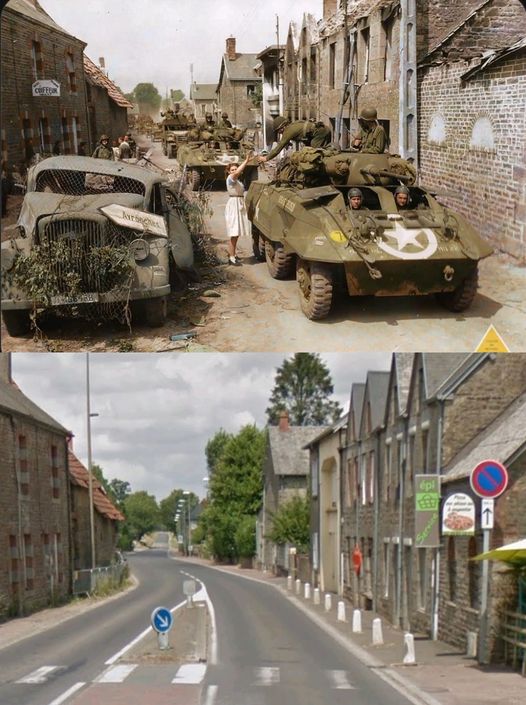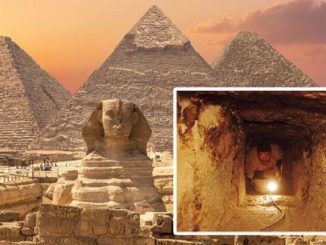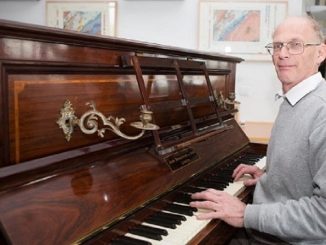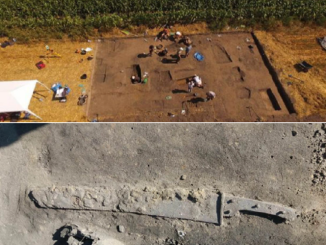The Route de la Libération, or the D35 road, near its intersection with the D924 in Normandy, France, holds a significant place in World War II history. On July 31, 1944, this location became a brief but poignant stop for the US soldiers of the 25th Cavalry Reconnaissance Squadron (Mecz) of the 4th Armored Division. Captured in an evocative photograph, these soldiers are seen having lunch by the roadside, a moment of respite amidst the chaos of war. This scene, situated about 14 kilometers east of Granville in Folligny, encapsulates the relentless advance of Allied forces through Normandy. Today, this intersection serves as a peaceful reminder of the past, blending the echoes of history with the tranquility of rural France. In this blog post, we will explore the historical significance of this location, the transformation it has undergone, and the broader context of Normandy’s wartime history.

The Historical Significance of the Intersection
On July 31, 1944, the intersection of the D35 and D924 roads witnessed a slice of wartime reality that was both mundane and extraordinary. The soldiers of the 25th Cavalry Reconnaissance Squadron, part of the famed 4th Armored Division, were taking a break for lunch. This moment, immortalized in a photograph, reflects the human side of war—the need for rest, food, and camaraderie, even amidst the relentless push towards liberation.
The 4th Armored Division played a crucial role in Operation Cobra, the breakout from the Normandy beaches that allowed Allied forces to advance into occupied France. The intersection near Folligny was strategically significant, providing a route for the division as it moved eastward. The soldiers’ presence here symbolizes the broader campaign to liberate France from Nazi occupation, a campaign marked by fierce battles, significant sacrifices, and eventual victory.
Today, this intersection is a quiet rural spot, but its historical resonance remains strong. For those who visit, it serves as a poignant reminder of the events that transpired there and the individuals who played a part in the broader effort to secure freedom and peace in Europe.
Then and Now: A Landscape Transformed
The photograph from July 31, 1944, shows a scene of temporary respite for the soldiers: jeeps parked along the roadside, men seated on the grass, and a sense of urgency mixed with the brief tranquility of a meal break. The landscape around them is marked by the scars of conflict, with the looming threat of battle never far away.
Fast forward to the present day, and the same intersection is almost unrecognizable in its serenity. The roads are well-maintained, and the surrounding fields are green and peaceful. The remnants of war have long since been replaced by the rhythms of rural life. The transformation of this location from a wartime staging ground to a peaceful countryside intersection is a testament to the resilience and recovery of Normandy and its people.
Visitors to the intersection today can reflect on the past while appreciating the present. The contrast between the wartime photograph and the modern landscape highlights the enduring impact of history on our collective memory and the ongoing journey of reconciliation and peace.
The Role of the 25th Cavalry Reconnaissance Squadron
The 25th Cavalry Reconnaissance Squadron, part of the 4th Armored Division, was integral to the success of the Allied advance through Normandy. Their role involved scouting ahead of the main forces, gathering crucial intelligence, and engaging in skirmishes to clear the way for the larger divisions. This required speed, bravery, and the ability to operate independently in hostile territory.
The photograph of the squadron having lunch near Folligny captures a rare moment of respite. These soldiers were often on the move, facing the constant threat of enemy encounters. Their presence at this intersection on July 31, 1944, signifies a brief pause in a relentless campaign that would eventually lead to the liberation of Paris and the downfall of the Nazi regime in France.
The experiences of the 25th Cavalry Reconnaissance Squadron reflect the broader narrative of the Normandy campaign—intense, fast-paced, and fraught with danger. Their contributions were vital to the success of the Allied forces, and their story is a crucial part of the tapestry of World War II history.
Preserving History and Honoring Memory
Preserving the history of places like the intersection of the D35 and D924 is essential for honoring the sacrifices made during World War II. The photograph of the 25th Cavalry Reconnaissance Squadron is more than just an image; it is a window into the past, offering insights into the experiences of the soldiers and the realities of the conflict.
Efforts to maintain and commemorate such historical sites ensure that future generations can connect with the past. Memorials, museums, and educational programs play a vital role in keeping history alive. In Normandy, numerous sites and landmarks honor the events of World War II, providing context and understanding for visitors from around the world.
The intersection near Folligny, while less well-known than iconic locations like Omaha Beach or the cliffs of Pointe du Hoc, is nevertheless an important part of the broader story. By recognizing and preserving these sites, we ensure that the legacy of those who fought and sacrificed is remembered and honored.
Conclusion: Reflecting on History and Discoveries
The intersection of the D35 and D924 roads in Normandy is a testament to the enduring legacy of World War II. The photograph of the 25th Cavalry Reconnaissance Squadron captures a fleeting moment of humanity amidst the chaos of war, providing a poignant reminder of the sacrifices made for freedom. Today, this intersection stands as a symbol of resilience, recovery, and the passage of time.
As we reflect on the hidden histories and transformative journeys of places like this, we also open ourselves to discovering more about our collective past. Just as the photograph of the soldiers near Folligny offers a glimpse into a pivotal moment in history, countless other sites and artifacts around the world hold stories waiting to be uncovered. From ancient ruins to wartime relics, each discovery enriches our understanding of humanity’s journey through time.
In exploring these histories, we not only honor those who came before us but also gain valuable perspectives on the present and future. The Route de la Libération serves as a powerful reminder of the importance of remembering and learning from our past, ensuring that the lessons of history continue to inform and inspire us.
For those intrigued by the intersection’s past and present, we encourage you to view the historical images and reflect on the profound changes that have shaped this and many other locations. By doing so, we keep the memory of events like those of July 31, 1944, alive, bridging the gap between history and our modern world.
4o


